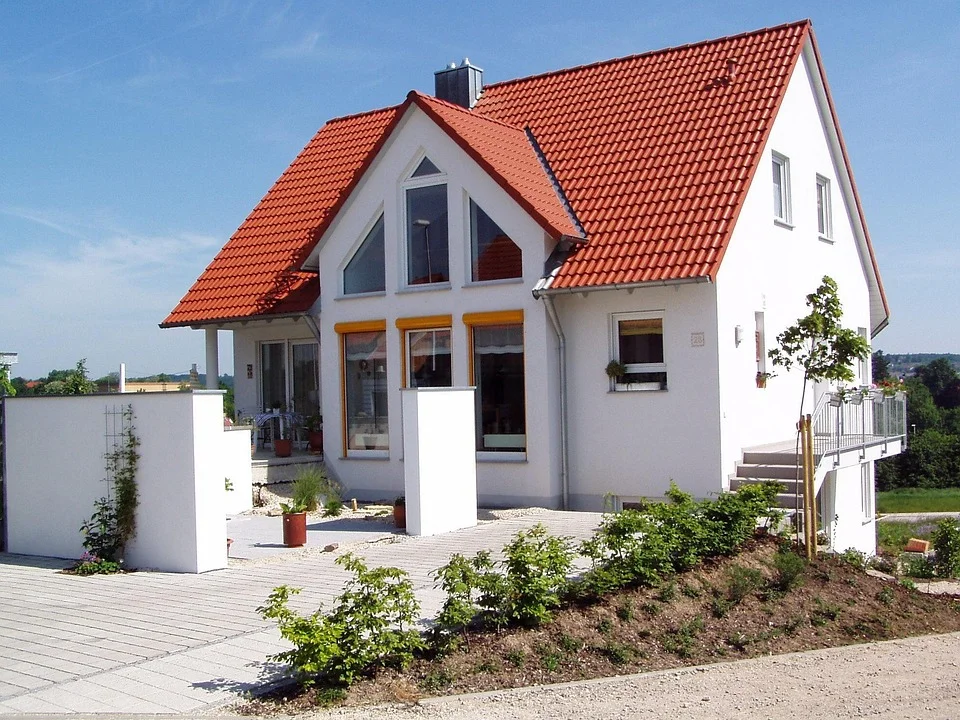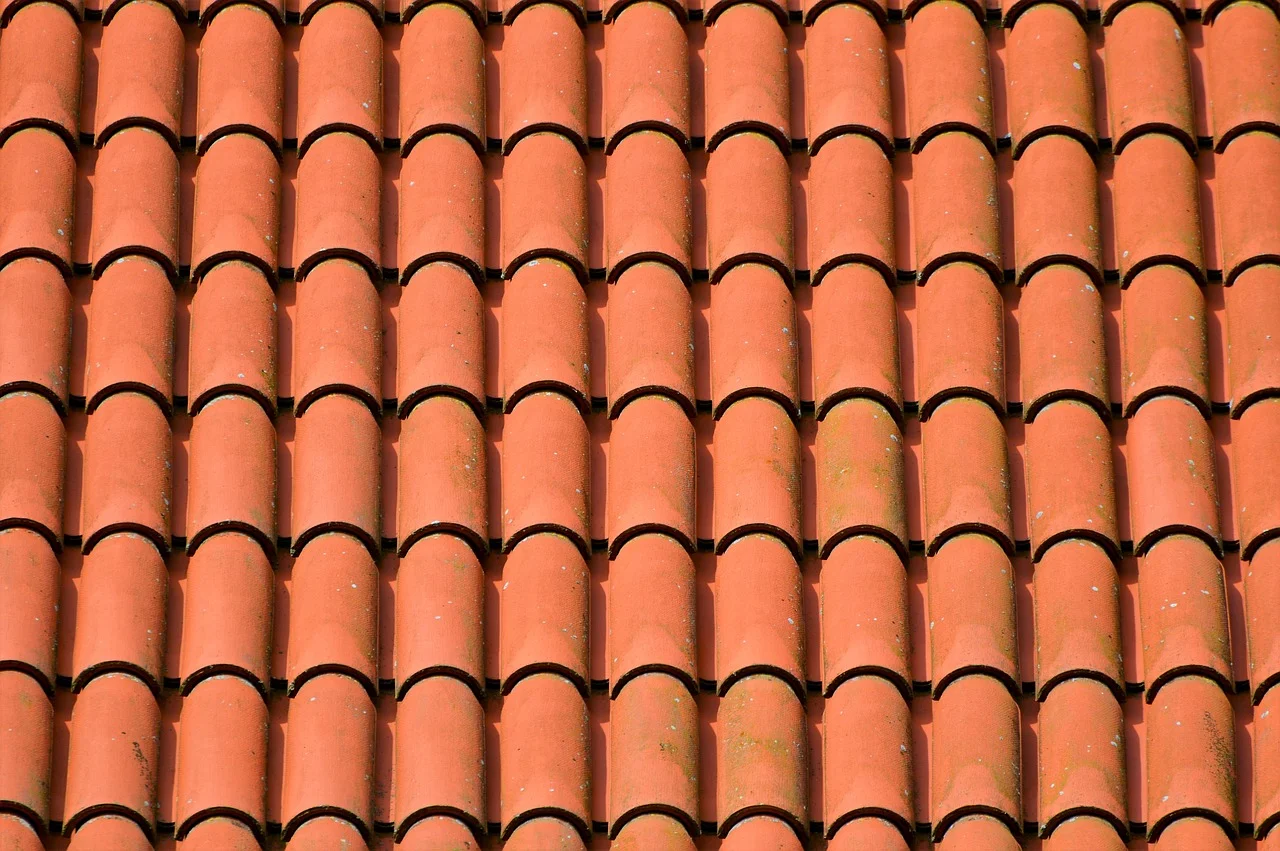Spanish roof tiles, including styles like Esclavas and Parsitie, have become synonymous with timeless elegance and architectural charm. Their wavy design is distinctive and eye-catching. Available in rich colors, these tiles define Mediterranean-style homes. But beyond their aesthetic appeal, Spanish roof tiles offer durability, versatility, and energy efficiency. This guide explores the styles, colors, and benefits of spanish roof tile style color esclavas parsitie. It also helps you choose the best tiles for your home.
Spanish Roof Tile Style: Color, Esclavas, and Parsitie Explained
Spanish roof tiles are also called “barrel tiles” or “mission tiles.” These curved tiles resemble traditional clay tiles. They are commonly used in Mediterranean and Spanish-style architecture. These tiles have a unique S-shape. This design ensures efficient water drainage. It also gives them a distinct interlocking look.
Spanish roof tiles were traditionally made from terracotta or clay. Modern options include concrete and synthetic composites. Their timeless design and practicality make them a popular choice for homeowners and builders alike.
Types of Spanish Roof Tiles
Esclavas Tiles
Esclavas tiles are a unique style in Spanish and colonial architecture. They are narrower and more decorative than barrel tiles. This creates a distinct, textured appearance.
Essential Features of Esclavas Tiles
- Narrow width for intricate patterns
- Enhanced durability
- Often used in decorative or accent applications
Parsitie Tiles
Parsitie tiles blend function and art. They feature bold designs and patterns. These designs reflect Spanish culture.
Key Characteristics of Parsitie Tiles
- Rich, decorative patterns
- High resistance to weather conditions
- Ideal for roofs that demand a striking visual statement
Traditional Clay Tiles
Clay tiles are the classic choice for Spanish roofs. These tiles are made from natural clay. They are baked at high temperatures for durability. They are eco-friendly and come in earthy tones like red, orange, and brown. Their porous nature also helps regulate indoor temperatures.
Concrete Tiles
Concrete Spanish tiles are a more affordable and versatile alternative to clay. These tiles are made from cement, sand, and water. They offer increased durability. They also come in a wide range of colors and finishes. Concrete tiles can also mimic the look of traditional clay tiles.
Synthetic Tiles
For a lightweight option, synthetic Spanish tiles are perfect. They are made from polymer composites or recycled materials. These tiles are weather-resistant, low-maintenance, and come in different styles and colors.
Glazed Tiles
Glazed Spanish roof tiles have a glossy finish. This adds sophistication and extra protection against water absorption. The glazing process allows for vibrant and customizable color options.
Custom Tiles
Some manufacturers offer custom-designed Spanish roof tiles. These cater to unique architectural needs or aesthetic preferences. These tiles can be crafted in non-traditional shapes, colors, or finishes.
Popular Spanish Roof Tile Colors
The color of your roof can significantly impact your home’s curb appeal and energy efficiency. Here are some of the most popular colors for Spanish roof tiles:
Terracotta Red
Terracotta red is the classic color for Spanish roof tiles. It evokes a warm, rustic charm. This shade complements Mediterranean and Southwestern styles.
Earthy Browns and Beiges
Neutral tones like brown and beige offer a subtle, natural look. They blend seamlessly with outdoor surroundings. These shades are versatile and timeless.
Sunset Orange
Sunset orange tiles are a brighter alternative to terracotta. They add vibrancy and character to your roof. These tiles still maintain a traditional aesthetic.
Deep Charcoal
For a modern twist, deep charcoal tiles offer a sleek and sophisticated appearance. This color pairs well with contemporary Spanish-style homes.
Glazed Blue or Green
Glazed tiles in shades of blue or green add a unique and striking appeal. These colors are common in coastal or tropical areas. They reflect the surrounding environment.
Ochre and Yellow
Bright ochre and yellow shades bring a cheerful and vibrant feel to roofs, making them ideal for homes in sunny climates.
Benefits of Spanish Roof Tiles
Durability
Spanish roof tiles are renowned for their longevity. Clay and concrete tiles can last 50 years or more with proper maintenance, making them a cost-effective investment.
Energy Efficiency
The natural thermal properties of Spanish roof tiles help regulate indoor temperatures. They reflect heat in the summer and keep warmth in the winter, reducing energy consumption.
Weather Resistance
These tiles are highly resistant to harsh weather conditions, including heavy rain, snow, and extreme heat. Their curved design facilitates efficient water runoff, preventing leaks.
Aesthetic Appeal
With their distinctive shape and vibrant colors, Spanish roof tiles enhance the visual appeal of any home. They’re particularly suited for Mediterranean, Southwestern, and Spanish Revival architecture.
Low Maintenance
Spanish roof tiles require minimal upkeep. Regular checks and occasional cleaning are usually enough to keep them in good shape and working properly.
Eco-Friendly
Clay and concrete tiles are made from natural, sustainable materials. They’re also recyclable, reducing environmental impact.

Contemporary Innovations in Spanish Roof Tiles
Sustainable Options
Modern Spanish roof tiles are made from eco-friendly materials like recycled composites. They offer durability and aesthetic appeal. These tiles also minimize environmental impact.
Solar Roof Tiles
Solar-integrated Spanish roof tiles blend traditional design with renewable energy technology. They’re a great option for homeowners who care about the environment.
Benefits of Solar Roof Tiles
- Reduced energy bills
- Seamless integration with traditional Spanish tile designs
- Long-term energy savings and reduced carbon footprint
Streamlined Designs
Minimalist, sleek styles are becoming popular. They offer a modern look while keeping the classic charm of Spanish roof tiles.
How to Choose the Right Spanish Roof Tile?
Consider Your Home’s Style
Ensure the tile’s color and design complement your home’s architectural style. Traditional clay tiles suit classic designs. Concrete or glazed tiles are perfect for modern aesthetics.
Test Your Climate
Pick tiles that can handle the weather in your area. For example, synthetic tiles are ideal for areas prone to extreme weather, while clay tiles perform well in moderate climates.
Set a Budget
Spanish roof tiles come in a range of prices. Set your budget before exploring options. This helps you balance quality and affordability.
Check Installation Requirements
Some tiles are heavier than others, requiring more structural support. Consult a roofing professional to ensure your home can accommodate the chosen material.
Prioritize Energy Efficiency
Choose tiles with natural insulating properties or reflective coatings. These improve energy efficiency and reduce utility bills.
Installation Method and Thoughts About Issues
Preparing the Roof Deck
The roof deck must be clean, level, and secure before installation to ensure a stable foundation for the tiles.
Underlayment Installation
A waterproof underlayment is crucial for moisture protection. It also helps extend the roof’s lifespan.
Tile Placement
Spanish roof tiles should be laid row by row, starting with a starter row at the roof’s edge. Proper interlocking ensures stability and water resistance.
Common Issues
Some challenges include handling broken tiles, ensuring proper alignment, and addressing ventilation needs. Hiring skilled experts can help avoid these problems.
Maintenance Tips for Spanish Roof Tiles
Inspect Regularly
Check for cracks, chips, or displaced tiles at least twice a year. Fixing problems quickly can stop more damage from happening.
Clean Periodically
Remove debris such as leaves and dirt to maintain the roof’s appearance and functionality. Use a gentle pressure washer or soft brush to avoid damaging the tiles.
Seal and Repaint
For glazed or painted tiles, reseal or repaint them periodically. This preserves their finish and waterproofing.
Hire Professionals for Repairs
For major damage, hire professional roofers experienced with Spanish roof tiles. They will ensure proper repairs and replacements.
FAQs
Are Spanish roof tiles worth the cost?
Yes, their durability, energy efficiency, and timeless appeal make them a worthwhile investment.
Can Spanish tiles handle snowy climates?
Absolutely. With proper installation, these tiles can withstand snow and ice effectively.
Are Spanish tiles easy to maintain?
Yes, they require minimal maintenance compared to other roofing materials, making them a convenient choice.
Conclusion
Spanish roof tiles, including styles like Esclavas and Parsitie, offer timeless beauty and practical benefits. These tiles are a popular choice for homeowners wanting elegance and durability. With various materials and colors, there’s an option for every architectural preference and climate. Understanding the features of Spanish roof tile styles, including Esclavas and Parsitie, helps you make a decision that enhances your home’s aesthetic appeal and functionality for years to come.
